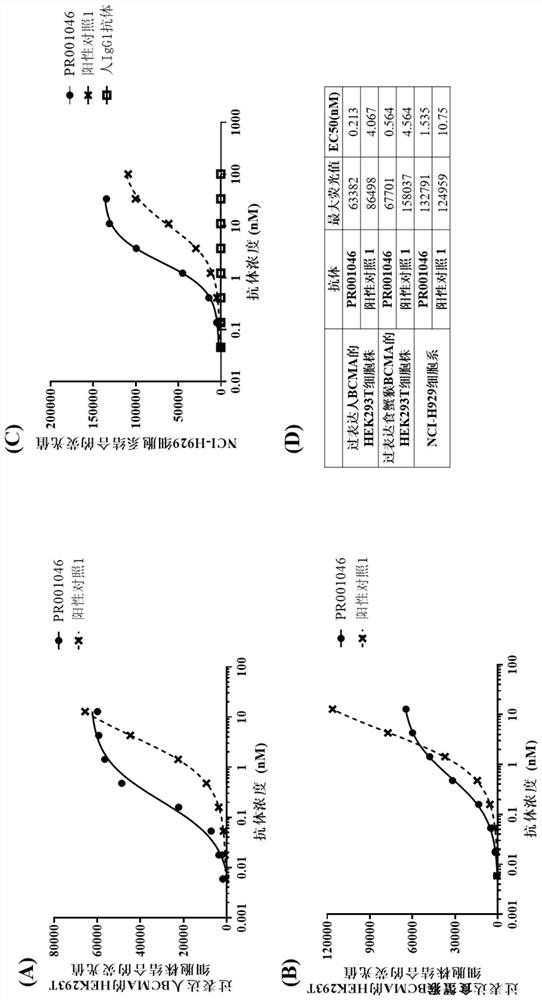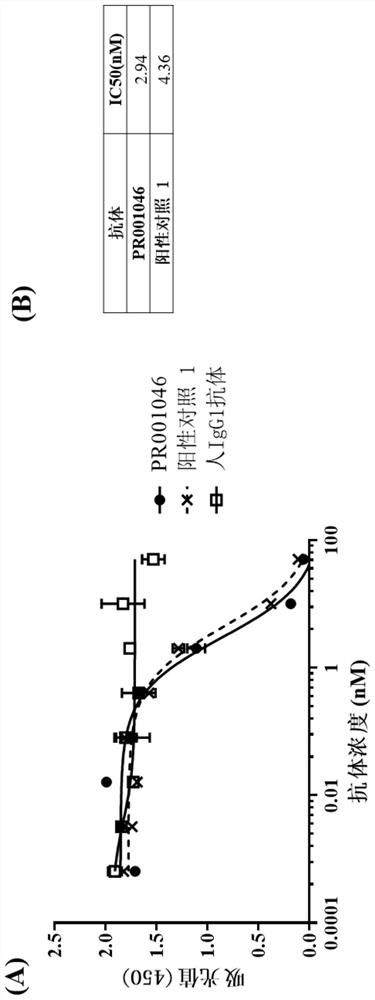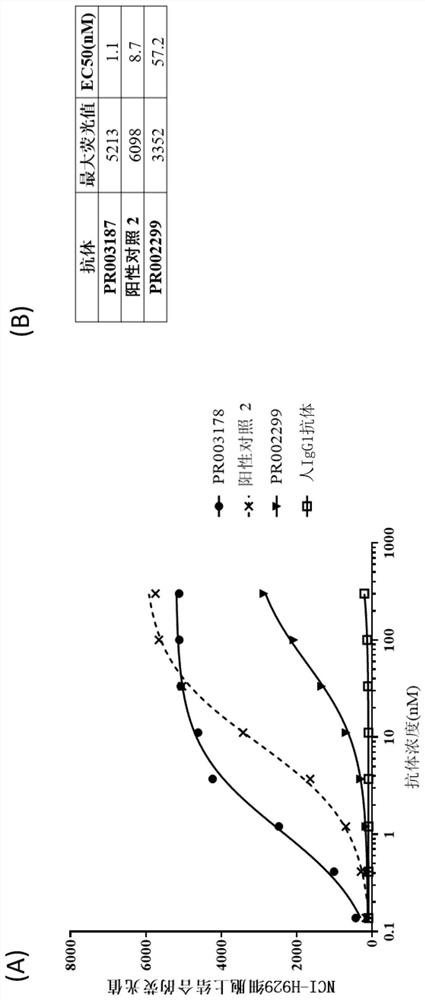Antibody targeting BCMA, bispecific antibody and uses of antibody targeting BCMA and bispecific antibody
A bispecific antibody and targeting technology, applied in the direction of antibodies, antibody medical components, anti-receptor/cell surface antigen/cell surface determinant immunoglobulin, etc., can solve light chain mismatch and heterodimerization and other issues to achieve the effect of optimizing activity, reducing toxicity and long half-life
- Summary
- Abstract
- Description
- Claims
- Application Information
AI Technical Summary
Problems solved by technology
Method used
Image
Examples
Embodiment 1
[0053] Example 1. The acquisition of mouse immunization and anti-BCMA antibody molecules
[0054]The BCMA antigen can be used to immunize experimental animals to obtain antibody molecules specifically binding to BCMA, and the experimental animals can be mice, rats, rabbits, sheep, camels and the like. Typically, the resulting antibody molecules are non-human. After obtaining non-human antibodies, these molecules need to be humanized using antibody engineering technology to reduce immunogenicity and improve druggability. However, the humanization process of antibodies has its own technical complexity, and molecules after humanization often reduce the affinity for antigens. On the other hand, advances in transgenic technology have made it possible to create genetically engineered mice that carry the human immunoglobulin immune repertoire and have their endogenous murine immune repertoire deleted. The antibody produced by this transgenic mouse has a fully human sequence, so the...
Embodiment 2
[0068] Embodiment 2.FACS detects the binding ability of the HCAb monoclonal antibody cell level of anti-human BCMA
[0069] This example is to study the activity of anti-human BCMA HCAb monoclonal antibody binding to human and cynomolgus monkey BCMA in vitro. The HEK293T cell line overexpressing human BCMA (HEK293T / huBCMA, Beijing Kangyuan), the HEK293T cell line overexpressing cyno BCMA (HEK293T / cynoBCMA, Beijing Kangyuan) and the cell line NCI-H929 overexpressing human BCMA ( CRL-9068 TM ) for antibody binding experiments at the cellular level. Briefly, HEK293T / huBCMA and HEK293T / cynoBCMA cells were digested and resuspended with DMEM complete medium to collect NCI-H929 cell suspension. Adjust the three cell densities to 1×10 6 cells / mL. 100 μL cells / well were inoculated in a 96-well V-bottom plate (Corning, Cat#: 3894), and then 100 μL / well, 3-fold dilutions of the antibody to be tested was added at 2 times the final concentration. Place the cells at 4°C and incubate f...
Embodiment 3
[0071] Example 3.ELISA detection of anti-human BCMA HCAb monoclonal antibody to the blocking of human BCMA and ligand BAFF protein binding
[0072] This example is to evaluate the blocking ability of anti-human BCMA HCAb monoclonal antibody on the binding of human BCMA (ACRO, BCA-H522y-100 μg) to the ligand BAFF protein (ACRO, BAF-H5248-50ug). Using a biotinylation kit (ThermoFisher, A39257, EZ-Link Sulfo-NHS-LC-Biotin), the BAFF protein was biotinylated according to the instructions. Use 1 μg / mL human BCMA protein, Fc Tag (ACRO, Cat#: BC7-H5254) to coat the plate (Corning, Cat#: 9018), overnight. After washing 3 times with PBST, add 2% BSA to block at room temperature for 1 hour. After washing with PBST for 3 times, add 100 μL / well of 3-fold concentration gradient dilution of the antibody to be tested, the initial concentration is 50 nM, and after incubation at room temperature for 1 hour, discard the supernatant, and add 100 μL / well of 0.5 μg / mL biotinylated human BAFF prot...
PUM
 Login to View More
Login to View More Abstract
Description
Claims
Application Information
 Login to View More
Login to View More - R&D
- Intellectual Property
- Life Sciences
- Materials
- Tech Scout
- Unparalleled Data Quality
- Higher Quality Content
- 60% Fewer Hallucinations
Browse by: Latest US Patents, China's latest patents, Technical Efficacy Thesaurus, Application Domain, Technology Topic, Popular Technical Reports.
© 2025 PatSnap. All rights reserved.Legal|Privacy policy|Modern Slavery Act Transparency Statement|Sitemap|About US| Contact US: help@patsnap.com



